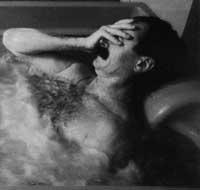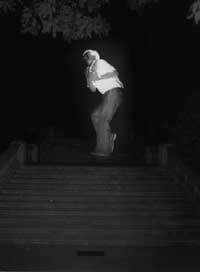Intensive responsibilities
1991/11/01 Ibarguren Olalde, Karlos Iturria: Elhuyar aldizkaria
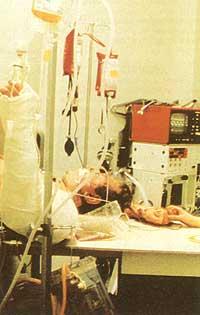
While a specific date of birth of these services cannot be given, it cannot be denied that adverse wars had an important influence. In the war of crime (1853-1856), when Florence Nightingl decided to gather the most serious patients near the nurse's post, he began the philosophy of the AIU. Although this continued in World War II (1939-1945), its true birth can be found in the 1950s.
At that time in Sweden there was an epidemic of polio, the disease paralyzed diseases and could not breathe. To cope with this serious situation, we saw the need to bring together in a single service the necessary technology and highly qualified professionals. Although there has been a significant boost since then, these are basically the particularities of the AIU: having a central service that brings together the necessary technology and highly qualified professionals, where in addition to keeping the patient controlled by continuous monitoring, a specific treatment for his disease begins.
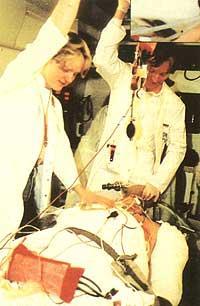
When we say that this is a central service, we mean that to him will come a great variety of diseases, that is, people of very different specialties, and that in turn will be in close relationship with other services of the hospital.
Since we talk about people coming to the place, we have to discard an idea that is around many people. The AIU, of course, is headed for very serious patients, but always reversible, sick to whom something can be done. Do not take patients who are going to die or who have an incurable disease.
We can divide the AIU into two parts and therefore the patients seen in two groups. Heart diseases (heart attacks, arrhythmias...) and multipurpose (polytraumatized, serious infections, postsurgical...). The main reason for this distribution is that while the former are normally aware, in the latter this requirement is often not met, they need respiratory support or other special techniques.
The conditions of the AIU are very concrete and, if necessary, one of the most attractive to people is the visit. Visits can only be made at a certain time and must be done through a catwalk and with some of the garments offered in it. This is due, on the one hand and as already mentioned, to the practice of very concrete and often aggressive techniques (in addition to being hard for an unaccustomed person, the staff who work needs a space to move comfortably and quickly). On the other hand, such a serious patient needs total rest and visits are additional fatigue. Finally, there is a problem of pavements, since the passage of many people implies an increase of the risk of them.
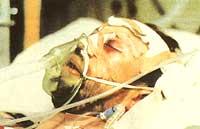
When the life of the patient is out of risk and therefore this type of intensive services is not necessary, he moves to another normal hospital room, where he gets the complete composition of his process.
Your staff is specially prepared for this work. In the case of doctors, for example, it is necessary to perform a specialty of 5 years to be intensive. In the case of nurses, in addition to being prepared for it, we can find more per patient than in other services. If we add to this that special techniques and treatments are carried out and that for this very cutting-edge tools are needed, it is easy to understand that the maintenance of this service is very expensive.
AIU Adults Hospital Nuestra Señora de Arantzazu de Donostia
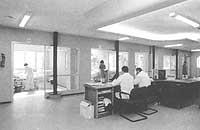
The Hospital Nuestra Señora de Arantzazu in San Sebastian has two AIUs, one for children and one for adults. This second, which has been running for about fifteen years, has a new location for two years. It would be said that the modern design of the new location, if it were not due to the serious pathology existing, makes the space attractive. It has 24 beds, 14 multipurpose and 10 coronary. The rooms are individual and, instead of door, have crystals that facilitate the constant care of the patient.
In 1990, 995 patients passed: 558 coronary and 407 polyvalent (most come directly from the emergency department and the main pathology is infarction and accidents). Usually there are not too many days in this service, although the duration certainly depends on its pathology. Half stay round 7 days.
It can be said that the local mortality rate is 15%. Although this data has no cold value (without knowing the severity of the pathology that is introduced it is not possible to manage it), we can affirm that it is really good.
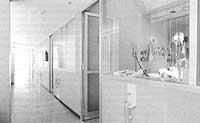
This fact is associated with a reality that has recently been mentioned a lot: Organ transplantation. Many young people die there, many of them as a result of accidents, so this misfortune makes them suitable candidates to be donors. In 1990 there were 13 organ donors at the AIU of Arantzazuko Ama Hospital, which made it the most donor service of the CAPV.
Undoubtedly, medicine continues to have great limitations and many times we are in young hands with a very promising future, but this type of services, together with all the services that make up the hospital, allow us to do things that a few years ago seemed incredible. Our hope, of course, is to overcome the main limitations of medicine in the coming years. Witness time!.
NOTE:
Thanks to the doctors of the AIU of the Hospital Nuestra Señora de Arantzazu in San Sebastian who have helped me to do this work.

Gai honi buruzko eduki gehiago
Elhuyarrek garatutako teknologia




